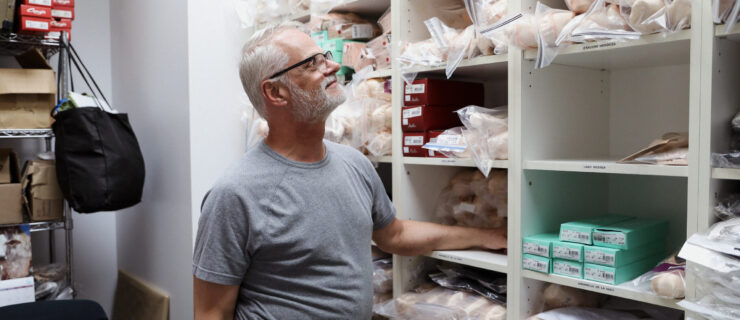Call Board
New Work at The Royal
Though long a story ballet stronghold, The Royal Ballet has become a home for new choreography as well. During his first year at the company’s helm, artistic director Kevin O’Hare has made it clear that he’ll follow in the footsteps of his predecessor, Monica Mason—which means there are a lot of premieres on the horizon. “I want to build on what Dame Monica started,” O’Hare says. “New work is the lifeblood of the company.”
To wit: The Royal will perform its first Alexei Ratmansky commission, set to an orchestration of Chopin’s 24 Preludes, this February. “I approached Alexei before I even got the job,” O’Hare says. “I felt if I wasn’t appointed director, whoever was would be happy to have a new Ratmansky work.”
O’Hare also made up-and-coming talent Liam Scarlett The Royal’s first artist-in-residence last fall. Add in resident choreographer Wayne McGregor and artistic associate Christopher Wheeldon, and the company has a heady home team of choreographers generating new ballets, on top of its commissions. “What’s fantastic about Wayne, Christopher and Liam is the diversity of their styles,” O’Hare says. “And they know the company dancers so well they will bring out facets of their abilities that may not have otherwise been seen.”
Ballet San Jose Rebounds
Ever since Wes Chapman’s appointment as Ballet San Jose’s artistic consultant last January—following the controversial ousting of founding artistic director Dennis Nahat—ballet fans have wondered what the reinvented BSJ might look like. The answer? A bit like American Ballet Theatre, Chapman’s one-time home.
BSJ announced a partnership with ABT in December 2011, giving it access not only to the larger company’s teaching curriculum, but also to its coaches, costumes and sets. So in a way it’s not surprising that BSJ begins 2013 with three company premieres right out of the ABT playbook: the full-length Don Quixote (staged by Chapman) in February, and a repertory program that includes Sir Frederick Ashton’s Les Rendezvous and Thaïs Pas de Deux in March.
“We’re still trying to figure out the company’s identity,” says Chapman, who now serves as BSJ’s artistic advisor, and shares artistic leadership with principal ballet master Raymond Rodriguez. “But for me it’s natural to head in the ABT direction. I grew up there during the Baryshnikov era, and he was one of the greatest directors of the time. He had exquisite taste. So these days, I frequently find myself thinking, ‘What would Misha have done?’ ”
In future seasons, Chapman hopes to bring in a production of The Sleeping Beauty, as well as works by European choreographers like Jirí Kylián and Hans van Manen. He’s also planning a number of repertory commissions, with the first, a ballet by frequent ABT collaborator Jessica Lang, premiering in April. “This company is a strong, eclectic group of people,” Chapman says. “They’re hungry for new stuff, and the best way to feed them is to have them work with artists like Jessica.”
Rite of Spring Turns 100
Igor Stravinsky’s The Rite of Spring, with choreography by Vaslav Nijinsky, shocked balletomanes at its Paris premiere in 1913. A century later, Stravinsky’s score has become one of the most frequently choreographed pieces of music in the world. Ballet companies everywhere are celebrating Rite’s centennial this year with performances of old and new versions of the work. Particularly notable is Millicent Hodson and Kenneth Archer’s reconstruction of Nijinsky’s original choreography. The Joffrey Ballet will tour it in the U.S. in February and March and the Mariinsky Ballet will perform it later in the spring.
Hamburg Ballet Brings
Nijinsky to the U.S.
This February, Hamburg Ballet embarks on a U.S. tour that includes stops in San Francisco, Costa Mesa and, for the first time, Chicago. The highlight of the three-week excursion is Nijinsky, artistic director John Neumeier’s dark, kaleidoscopic retelling of Vaslav Nijinsky’s life. Neumeier, who is famously fascinated with the great dancer, has amassed the world’s largest private collection of Nijinsky artifacts. “I’ve learned so much through John,” says Hamburg principal Alexandre Riabko, the tour’s first-cast Nijinsky. “He brought photographs and lithographs to rehearsals, and told us: ‘It looks like Nijinsky is still dancing, even though his movements are frozen within a photo. He is never posing, but always alive in these images.’ That was my greatest inspiration for the role.”
Going Gaga at Atlanta Ballet
The works of Batsheva Dance Company artistic director Ohad Naharin—rooted in his improvisational, imagery-driven Gaga technique—have become staples for many contemporary dance companies. But a ballet company tackling Naharin? That’s a very different story.
When the Atlanta Ballet dancers found out they’d be performing Naharin’s Minus 16 this March, “we flocked to YouTube to get a sense of what exactly we were in for,” says company member Rachel Van Buskirk. “I knew a little about his work, but not much. It looked fun. And surreal. And, really, really hard.”
Van Buskirk has been exposed to improvisational techniques before, but “nothing as in-depth as Gaga,” she says. “The hardest part was letting go of my ballet impulse to make pretty shapes all the time. Gaga isn’t about shapes; it’s about interpreting words and feelings through movement.” Former Batsheva dancer Rachael Osborne, who set Minus 16 on AB, tried to ease the transition. “She knows we’re ballerinas,” Van Buskirk says, with a laugh. “Her whole approach is: Nothing you do is ‘wrong.’ She’d pick out different words to motivate each person, to get us closer to the look she wanted.”
It’s a process that has stretched the company dancers considerably, but they’ve relished the chance to branch out. “During one of our first rehearsals, there was a moment when we all looked around at each other and just shook our heads in disbelief, it was so different,” Van Buskirk says. “We were like: Is this happening? This is so cool.”




